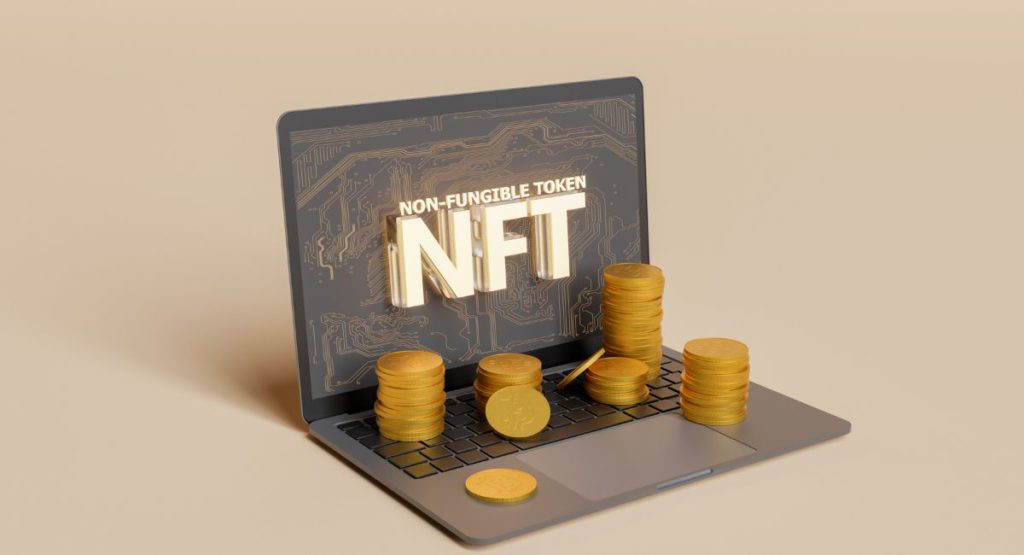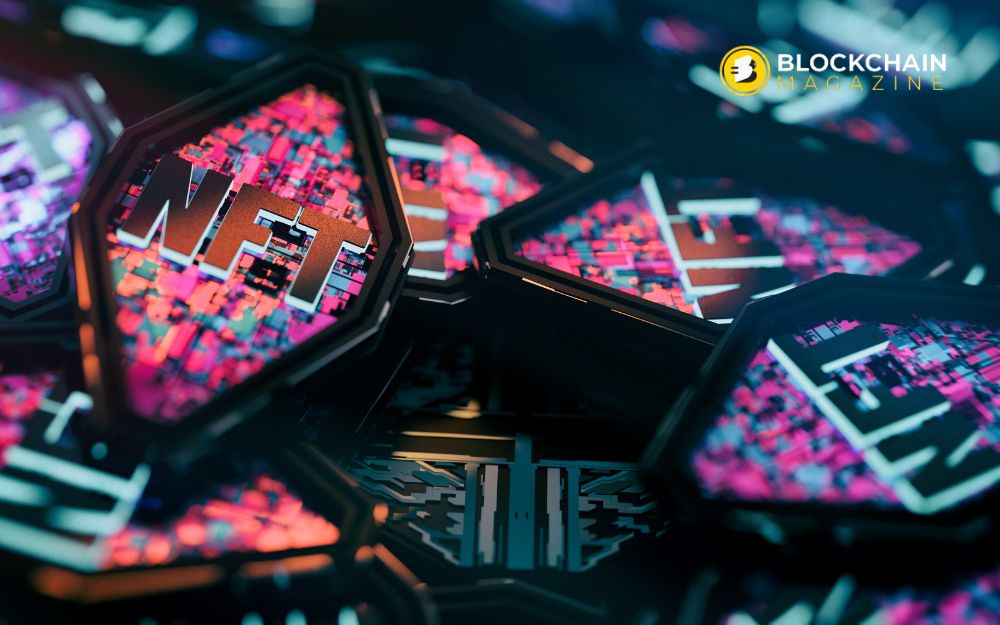What Went Wrong To Cause The Big NFT Market Crash In 2023
In recent years, Non-Fungible Tokens (NFTs) have taken the world by storm, captivating artists, investors, and collectors alike. NFTs, which represent ownership of unique digital assets, have been praised for their potential to revolutionize art, gaming, and digital ownership. However, in 2023, the NFT market experienced a significant crash that left many wondering what went wrong. This article explores the factors behind the NFT market crash and the lessons to be learned.
The NFT Hype: A Brief Overview
1. Celebrity Endorsements
- Celebrities like Elon Musk, Beeple, and Jack Dorsey publicly embraced NFTs, which lent the market enormous visibility.
- These endorsements led to a surge in interest from both artists and collectors.
- High-profile figures like Lindsay Lohan and Mark Cuban launched their own NFT projects, contributing to the hype.
2. Art World Adoption
- The world of art saw a digital revolution, with artists like Beeple selling digital art pieces as NFTs.
- Christie’s, the renowned auction house, hosted a high-profile NFT art auction, bringing unprecedented attention to the space.
- Traditional art galleries and museums began exploring NFT exhibitions and installations.
3. Gaming and Virtual Real Estate
- NFTs disrupted the gaming industry, enabling gamers to own in-game assets as tradable tokens.
- Virtual real estate, especially in virtual worlds like Decentraland and The Sandbox, gained significant value.
- NFT-based virtual goods, skins, and items became highly sought after, further fueling the craze.
4. Blockchain Technology
- The underlying blockchain technology provided indisputable proof of ownership and provenance, fostering trust.
- Transparency in transactions and the immutability of the blockchain made NFTs a reliable way to verify digital ownership.
- Smart contracts enabled automatic royalties for creators, enhancing their financial incentives.
5. Digital Collectibles
- NFTs breathed new life into the concept of collectibles, from digital trading cards to unique avatars and digital pets.
- Collectors and enthusiasts were drawn to NFTs as a way to exhibit their digital possessions.
- Limited edition NFTs, especially those tied to cultural phenomena like NBA Top Shot, gained immense popularity.
6. Real Estate and Ownership
- NFTs extended their reach to real estate, where digital land and properties were bought and sold as unique tokens.
- Ownership of virtual land in metaverse projects became a status symbol and investment opportunity.
- Some early adopters profited significantly by purchasing virtual real estate in the right projects.
7. Artistic Freedom
- NFTs allowed artists to have more creative control and financial independence.
- Artists could set their own terms for licensing, royalties, and the number of editions for their digital creations.
- The removal of intermediaries in the art world was liberating for many creators.
8. Gaming and Interoperability
- Gamers appreciated the interoperability of NFTs across different games, enabling the transfer of assets between virtual worlds.
- NFTs opened the door to a true digital asset ecosystem, where items and characters could have value beyond a single game.
- The concept of “play-to-earn” emerged, allowing players to earn NFT-based rewards in games.
9. NFT Marketplaces
- NFT marketplaces like OpenSea, Rarible, and SuperRare provided user-friendly platforms for buying and selling digital assets.
- The emergence of these marketplaces democratized access to the NFT space, allowing artists and collectors to participate.
- Secondary markets facilitated the resale and trading of NFTs, making it a vibrant ecosystem.
10. Speculative Investment
- Speculators saw the potential for massive profits in the NFT market and began investing heavily.
- Some early NFT investors and collectors achieved significant returns on their investments.
- The lure of quick riches drove substantial capital into the NFT space.
Also, read – NFT Marketplaces Vs. NFT Development Companies: Understanding Their Roles And Impact
The NFT Market Crash: What Went Wrong?
Despite the initial excitement and rapid growth of the NFT market, 2023 witnessed a significant downturn that took many by surprise. Several key factors played a role in this abrupt shift in fortunes:
1. Speculative Frenzy
- Much of the NFT market’s early success was driven by speculative frenzy rather than genuine interest in digital ownership.
- Prices of NFTs skyrocketed to unsustainable levels as speculators sought quick profits by flipping assets.
- The feverish pace of speculation led to overinflated valuations of NFTs, detached from their intrinsic worth.
2. Oversaturation
- The market became oversaturated with NFT projects, diluting the uniqueness and value of individual tokens.
- The sheer volume of NFTs made it increasingly challenging for collectors and investors to distinguish valuable and high-quality assets from less-desirable ones.
- The flood of new projects led to marketplace congestion, making it harder for individual NFTs to stand out.
3. Lack of Regulation
- The NFT market operated in a regulatory gray area, which allowed for the proliferation of fraudulent and low-quality projects.
- A lack of regulatory oversight made it difficult to ascertain the legitimacy of NFT offerings, exposing investors to higher risks.
- The absence of clear consumer protections and investor safeguards eroded trust in the market.
4. Inflated Valuations
- As the NFT market expanded, some assets were perceived as overvalued. Buyers were willing to pay exorbitant prices for assets with little inherent value.
- The exuberance of the market created a disconnect between prices and the actual utility or artistic value of NFTs.
- Inflated valuations made NFTs vulnerable to a market correction, as prices needed to realign with reality.
5. Market Fatigue
- The relentless promotion and media coverage of NFTs led to market fatigue. Interest in the sector began to wane as the initial novelty wore off.
- The constant stream of NFT-related news and launches contributed to an oversaturation of information and a decrease in enthusiasm.
- Market participants, from artists to collectors, started to reevaluate their positions.
6. Economic Factors
- Broader economic factors, including inflation and fluctuations in the cryptocurrency markets, affected the NFT market’s dynamics.
- As the values of cryptocurrencies like Ethereum (often used to purchase NFTs) fluctuated, it impacted the purchasing power and willingness of NFT buyers.
- The interconnectedness of the NFT market with the broader crypto landscape meant that economic shifts had cascading effects.
7. The Role of Institutions
- Institutional interest in NFTs played a significant role in driving prices higher. As institutions withdrew or reduced their presence, it impacted market dynamics.
- The actions of institutional investors, artists, and celebrities in the NFT space had a cascading effect on market sentiment.
- Institutions exiting the market or taking a more cautious stance added to the overall market downturn.
8. Scalability and Environmental Concerns
- The scalability and environmental concerns of blockchain technology began to weigh on the market. High gas fees on Ethereum, often used for NFT transactions, affected the accessibility and affordability of NFTs.
- Concerns about the carbon footprint of energy-intensive blockchains prompted discussions about the sustainability of NFTs.
- The push for more eco-friendly blockchain solutions and scaling solutions aimed at addressing these issues became a central focus.
9. Technological Challenges
- Technical issues, including network congestion and bottlenecks, affected the user experience of interacting with NFTs.
- Scalability solutions and better infrastructure were needed to handle the growing demand and enhance the user experience.
- The challenges of integrating NFTs into various industries, such as gaming and art, became more apparent.
10. Loss of Confidence
- A loss of confidence in the NFT market, driven by skepticism, high-profile scams, and concerns about long-term value, led to a reduction in demand.
- As buyers and collectors reconsidered the stability and viability of NFTs, they became more risk-averse.
- The loss of confidence and growing uncertainty had a pronounced impact on market dynamics.
The NFT market crash of 2023 serves as a stark reminder of the perils of speculative bubbles and the need for a more sustainable and transparent approach to digital ownership. As the NFT space matures, these lessons can guide a more rational and credible future for NFTs, emphasizing the importance of responsible investment, due diligence, and regulatory clarity.
PFP boom was powered by:
💡Novel use-cases
🚀Thriving crypto market
🫠 FOMO / InsanityPost-market crash, the frenzy has faded, but the fundamental core of innovative use-cases still stands. For us, the priority is clear. pic.twitter.com/OZ9gPtbRd9
— Canna Sapiens (@CannaSapiensNFT) October 31, 2023
Lessons Learned

The NFT market crash of 2023 offers valuable lessons for both participants and observers:
1. Diversification
Diversify your investments. Don’t put all your resources into a single asset class, especially one as volatile as NFTs.
2. Due Diligence
Thoroughly research NFT projects before investing. Understand the artists, creators, and the underlying technology to assess the potential long-term value.
3. Regulatory Clarity
The NFT market could benefit from clear regulatory guidelines to protect investors and ensure a fair marketplace.
4. Intrinsic Value
Consider the intrinsic value of NFTs. Assets with real-world utility or unique artistic value are more likely to hold their worth.
5. Long-Term Perspective
Avoid short-term speculation and focus on the long-term potential of NFTs. Speculative bubbles are unsustainable in the digital ownership space.
Conclusion
The NFT market crash of 2023 serves as a cautionary tale about the dangers of speculative bubbles and the importance of due diligence in the digital asset space. While NFTs still hold tremendous promise, the market correction highlights the need for a more rational and transparent approach to digital ownership. As the NFT space matures, these lessons should guide investors, creators, and the industry as a whole toward a more sustainable and credible future.
FAQs about NFT market crash 2023
Is the NFT market crashing?
As of 2023, the NFT market has experienced a significant correction, but it may not be accurate to describe it as a full-blown crash. Prices of NFTs saw substantial declines after a period of rapid growth and speculation. This correction is part of the market’s natural cycle and a return to more sustainable valuations. It’s important to note that market dynamics can change, and the long-term outlook for NFTs remains promising. However, as with any investment, it’s essential to exercise caution and conduct thorough research.
2. Is NFT still profitable in 2023?
The profitability of NFTs in 2023 varies depending on various factors, including the specific NFT, its utility or artistic value, market trends, and investor strategies. While the market has witnessed a correction, there are still opportunities for profitability. Some NFTs with unique artistic or utility value continue to appreciate, and there are projects and artists exploring innovative concepts. As with any investment, profitability depends on careful selection and a long-term perspective.
3. What are the NFT ideas for 2023?
NFT ideas in 2023 continue to evolve and diversify. Some notable trends and ideas include:
- Virtual Real Estate: NFTs for virtual land and properties in metaverse projects.
- Digital Collectibles: NFTs for digital trading cards, unique avatars, and in-game items.
- NFT-Backed Loans: Using NFTs as collateral for loans.
- NFT Art in VR: Combining NFT art with virtual reality experiences.
- NFT Gaming Crossovers: Integrating NFTs into various video games for ownership and unique in-game assets.
- Music and Media: Artists and creators exploring NFTs for exclusive music releases, interactive content, and more.
The NFT space is highly dynamic, and new ideas continue to emerge as creators and developers explore the possibilities of blockchain technology.
4. What will be the value of NFT in 2030?
Predicting the exact value of NFTs in 2030 is challenging, as it depends on a multitude of factors, including market trends, technological developments, and regulatory changes. NFTs have the potential to become more integrated into various industries, from art and gaming to real estate and finance. Their value will be influenced by the level of adoption, use cases, and the broader economic climate. While some NFTs may appreciate significantly, it’s important to approach these projections with caution, as market dynamics can change rapidly in the crypto and blockchain space.
Stay informed with daily updates from Blockchain Magazine on Google News. Click here to follow us and mark as favorite: [Blockchain Magazine on Google News].
Get Blockchain Insights In Inbox
Stay ahead of the curve with expert analysis and market updates.
latest from tech
Disclaimer: Any post shared by a third-party agency are sponsored and Blockchain Magazine has no views on any such posts. The views and opinions expressed in this post are those of the clients and do not necessarily reflect the official policy or position of Blockchain Magazine. The information provided in this post is for informational purposes only and should not be considered as financial, investment, or professional advice. Blockchain Magazine does not endorse or promote any specific products, services, or companies mentioned in this posts. Readers are encouraged to conduct their own research and consult with a qualified professional before making any financial decisions. The featured image used is just a creative depiction of the title and it does not intend to hurt sentiments of any person or institution. If it hurts anyone sentiments, please do not hesitate to reach out to Blockchain Magazine.

 Bitcoin
Bitcoin  Ethereum
Ethereum  XRP
XRP  Tether
Tether  Solana
Solana  USDC
USDC  Dogecoin
Dogecoin  Cardano
Cardano  Lido Staked Ether
Lido Staked Ether  TRON
TRON  Wrapped Bitcoin
Wrapped Bitcoin  Chainlink
Chainlink  Wrapped stETH
Wrapped stETH  Sui
Sui  Avalanche
Avalanche  Stellar
Stellar  Hedera
Hedera  Toncoin
Toncoin  Shiba Inu
Shiba Inu  LEO Token
LEO Token  Hyperliquid
Hyperliquid  Bitget Token
Bitget Token  Litecoin
Litecoin  WETH
WETH  USDS
USDS  Polkadot
Polkadot  Bitcoin Cash
Bitcoin Cash  Ethena USDe
Ethena USDe  MANTRA
MANTRA  Wrapped eETH
Wrapped eETH  Uniswap
Uniswap  Pepe
Pepe  Ondo
Ondo  Monero
Monero  Aave
Aave  WhiteBIT Coin
WhiteBIT Coin  NEAR Protocol
NEAR Protocol  Mantle
Mantle  Official Trump
Official Trump  Aptos
Aptos  Dai
Dai  Internet Computer
Internet Computer  Ethereum Classic
Ethereum Classic  Bittensor
Bittensor  Cronos
Cronos  OKB
OKB  POL (ex-MATIC)
POL (ex-MATIC)  Gate
Gate 






